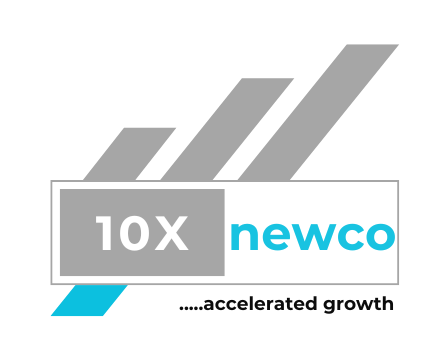by Terry Coull, Chief Growth Officer @ 10Xnewco | Enterprise Digital Transformation
By embracing digital transformation practices that compliment “coopetition”; that includes an ecosystem of suppliers, collaborators, competitors, and clients, one can unlock; value creation, achieve mutual benefits, and maintain a competitive edge in the market.
In our ongoing series on firms leveraging technology for maximum growth, we discuss first how firms operate, collaborate, and compete in order to grow revenue and market share. In this discussion, we share how digital ecosystem transformation as a practice directly compliments the “coopetition” model. As a reference point, 10Xnewco is modeled, embraces and operates as a coopetition ecosystem player supporting technology innovation and growth strategy.
Coopetition model includes…
In the dynamic world of technology, innovation is often driven by the collaborative efforts of various entities within an ecosystem. These entities, which can include startups, established companies, research institutions, and even competitors, come together in a unique form of collaboration known as coopetition. Coopetition blends cooperation and competition, enabling entities to work together towards common goals while still maintaining their competitive edge.
Digital Ecosystem Transformation
Digital ecosystem transformation practice refers to the comprehensive integration of digital technologies and practices across an organization and its network of partners, suppliers, customers, and other stakeholders. This transformation aims to create a connected, agile, and innovative environment that leverages digital tools and platforms to enhance collaboration, efficiency, and value creation. Key components include:
- Digital Platforms: Implementing cloud-based platforms, data analytics, AI, and IoT to facilitate real-time data sharing, automation, and decision-making.
- Integrated Systems: Connecting disparate systems and processes to create seamless workflows and improve operational efficiency.
- Customer-Centric Approach: Using digital tools to better understand and meet customer needs through personalized experiences and enhanced service delivery.
- Innovation and Agility: Fostering a culture of continuous innovation and agility to quickly respond to market changes and opportunities.
- Data-Driven Insights: Leveraging data analytics to gain insights into market trends, customer behavior, and operational performance.
Digital Ecosystem Transformation and the Coopetition Model
In a coopetition model, where suppliers, collaborators, competitors, and clients coexist and engage in both cooperative and competitive activities, digital ecosystem transformation can significantly enhance the effectiveness and benefitsof this model.
Here’s how:
- Enhanced Collaboration; Shared Platforms: Digital platforms enable seamless collaboration among ecosystem participants by providing shared tools and resources for communication, project management, and data sharing. Real-Time Data Exchange: Facilitates real-time data exchange, improving coordination and collaboration on joint projects and initiatives.
- Increased Efficiency; Automated Processes: Automation of routine tasks and processes reduces operational costs and improves efficiency, benefiting all participants in the ecosystem. Integrated Supply Chains: Digital transformation enables better integration of supply chains, enhancing transparency, reducing delays, and optimizing inventory management.
- Innovation and Agility; Innovation Hubs: Digital ecosystems can create virtual innovation hubs where participants can collaborate on research and development, leveraging each other’s expertise and resources. Agile Response: Enhanced agility allows participants to quickly adapt to market changes, co-develop new products, and respond to customer needs more effectively.
- Customer Value; Personalized Experiences: Digital tools enable deeper insights into customer preferences, allowing for more personalized and value-added services. Enhanced Service Delivery: Improved coordination and data sharing enhance the overall customer experience, making the ecosystem more attractive to clients.
- Competitive Advantage; Data-Driven Decisions: Access to comprehensive data analytics enables participants to make informed decisions, gaining a competitive edge in the market. Innovation Sharing: While competing in core areas, participants can share innovations in non-core areas, driving overall market growth and benefits for all.
- Risk Management; Cybersecurity: Digital transformation includes robust cybersecurity measures that protect the entire ecosystem from data breaches and cyber threats. Risk Sharing: Participants can share risk management strategies and collaborate on mitigation efforts, reducing individual exposure to risks.
Compliments of Coopetition with Digital Ecosystem Transformation
Digital ecosystem transformation compliments the coopetition model by creating a more dynamic, interconnected, and efficient environment where collaboration and competition can thrive. Here are some specific ways it complements coopetition:
- Foster Open Innovation: Participants can collaboratively develop new technologies and solutions together, sharing knowledge while protecting proprietary competitive advantages.
- Optimizing Resources: Shared digital platforms and tools optimize the use of resources, reducing redundancy and costs for all participants.
- Enabling Scale: Digital ecosystems can scale more easily, allowing participants to expand their operations and market reach collaboratively and competitively.
- Create Synergies: Digital integration creates synergies that enhance overall productivity and innovation, benefiting the entire ecosystem.
- Facilitate Market Access: Participants can leverage the ecosystem to access new markets and customer segments more efficiently.
In conclusion, digital ecosystem transformation practice enhances the effectiveness of the coopetition model by providing the technological infrastructure and tools necessary for seamless collaboration, increased efficiency, and continuous innovation. By leveraging digital transformation, a free open ecosystem of suppliers, collaborators, competitors, and clients can maximize value creation, achieve mutual benefits, and maintain a competitive edge in the market.


